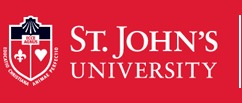Date of Award
2025
Document Type
Dissertation
Degree Name
Pharmaceutical Sciences (Ph.D.)
Department
Pharmaceutical Sciences
First Advisor
Vivek Gupta
Abstract
PAH is a rare, life-threatening disorder that causes the narrowing of lung blood vessels, leading to high blood pressure and strain on the heart. Current treatments only relieve symptoms and do not reverse the disease. The S1P signaling pathway is a potential target for treating PAH by preventing blood vessel remodeling. We found AC-SJU-1, an antineoplastic agent, as a potential anti-PAH molecule showing efficacy against diseased pulmonary artery smooth muscle cells. This study explores the potential of repurposing AC-SJU-1 as a therapy for PAH based on its indirect impact on S1P levels through its interaction with acid ceramidase. Additionally, since PAH is a cardiopulmonary disorder, the potential of AC-SJU-1 to be developed as an inhaled therapy was also evaluated for targeted pulmonary effects. The findings demonstrate the antiproliferative activity of ACSJU- 1 (EC50 values between 20-25 μM) in diseased pulmonary arterial smooth muscle cells (PASMCs), with substantial reduction in PAH-associated pathological markers. A significant improvement in the hemodynamic parameters was observed in the Su5416/hypoxia-induced PAH animal model following treatment with AC-SJU-1 (IT: 10 mg/kg). However, AC-SJU-1 demonstrated poor lung physiological stability due to its extensive hydrolysis by the carboxyl esterase-1 enzyme. Therefore, lipid-based nanoparticles, including novel ionizable lipid nanocarriers and conventional liposomes, were developed to assess their therapeutic efficacy via extensive in-vitro and in-vivo PAHrelevant studies to curb the off-target side effects and render physiological stability and localized effect. The results revealed the dose-dependent anti-proliferative effect of ACSJU- 1-LNCs (EC50 value <1 μM in diseased PASMCs) and AC-SJU-1-Lipo (EC50 value <3 μM in diseased PASMCs) was observed with a significant reduction in the S1P levels (****p<0.001). Higher AC-SJU-1 retention with enhanced physiological stability was observed even after 8 hours in the lungs, thus providing the sustained therapeutic effect of AC-SJU-1. Moreover, significant improvement was also observed in all hemodynamic (****p<0.001), calculative (****p<0.001), and morphometric parameters (***p<0.005) in Su5416/hypoxia-induced PAH animal model following treatment with lipid nanocarriers (IT: 10 mg/kg) in comparison to the plain AC-SJU-1. Owing to the translation potential of lipid-based nanocarriers, this study lays a solid groundwork for further assessment of lipid-based nanocarriers in clinical trials for treating PAH.
Recommended Citation
Goyal, Mimansa, "A REPURPOSED INHALED NANO THERAPY FOR PULMONARY ARTERIAL HYPERTENSION" (2025). Theses and Dissertations. 858.
https://scholar.stjohns.edu/theses_dissertations/858
